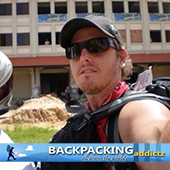The Republic of Turkey bestowed amongst the greatest legacies of cultures and people the world has come to know. Turkey lies right where Europe and Asia face off geographically in what seems a game of tug-and-war, pulling the cultural fringes of Eurasia. So what happens? The predictable, to be sure- an ongoing negotiation of EU candidacy. Turkey filed for EU candidacy in 1999, was considered in 2005, and will be negotiated in 5 or less years. The EU would be proud to have Turkey on board, and why not? They did grant this fascinating nation the royalty as European Capital of Culture of 2010.
So what you dare ask has this famous country contributed to the world? Besides that distinct Turkish smile and coffee, or the tingling sound of Turkish rolling out the tongue fast like a Rolls Royce, there’s much to see, much to learn. The stuff of legends, St. Nicholas who we also like to call Santa Claus began his life journey here born in Ankara, what Noah and his Ark ended here. Anatolia, Turkey is also the birthplace of Homer, St. Paul the Apostle, Herodotus, and King Midas. This belt-buckle-shaped piece of land is home to the oldest known human settlement of the 7th millennium BC in Catalhoyuk.
What will surprise the traveller is how clean, modern, and hip Turkey is. And although Turkey basks in its ancient beauty, its people are futuristic and optimistic while holding tight and fast to their traditions, that which they are celebrated for. But one factoid that’s hard to neglect is the recurring thought of the relation between the turkey bird and this country. Why were they named the same?
GEOGRAPHY

To the more important factoids: Turkey (39 00 N, 35 00 E) is an almost rectangular-shaped landmass in transcontinental Eurasia. The total area of 783,562 km2 is made up of Asian Turkey, Anatolia and Asia Minor, and European Turkey, Eastern Thrace. The 97% of Turkey belongs to Asia, while a humble 3% geographically sets on lower European territory. Turkey is very mountainous to the north (Pontic Range), south (Taurus Mountains), and more so to the east whereby lies the tallest peak of the region, Mt. Ararat, 5,166 metres. Towards the centre is the high Anatolian Plateau, whereas towards the coast, low narrow coastal plains. The Bosporus Strait is a significant landscape feature and the water link between the Black Sea and the Marmara Sea.
The flora of Turkey is the envy of Europe 9,000 times versus the entire Europe with 11,500 species, which simply is a lot. The country is also home to the legendary rivers of Tigris and Euphrates, and is surrounded to the north, south, and west by the Black Sea, Mediterranean Sea, and Aegean Sea respectively. Turkey includes one of the world’s most earthquake prone areas in the world that only a few weeks ago, tormented the land yet again.
CLIMATE
Aside from this, nothing causes so much trouble in Turkey, for the most part. To the Mediterranean Sea, the climate is temperate and perfect. Summers are hot and dry as summer ought to be and winters are cool and wet. To the Black Sea, oceanic climate where summers are warm, winters are cool, and wet all throughout the year, like London. The high inland experiences a harsher arid climate. Snow is very rare but happens, to the direction of the Mediterranean and Aegean.
PEOPLE
Hot or cold, Turkish hospitality is what it is. All 77.8 million Turks regard a stranger on the doorstep as “God’s guest”, at least for three days. Not to be confused, “Turk” refers to citizen; “Turkish” as descriptive to, say, ethnicity or traits. So, Turkish is predominant ethnic group consisting of 75% of the total population. Kurds are the largest non-Turkish ethnic group forming 18%, who, regardless of size, are economically disadvantaged and deprived of their rights. Greeks, Armenians, Jews, and other ethnic groups form the around 7% minority.
RELIGION
Of this, the secular state with no official religion is almost homogenously Sunni Muslim, if not for the Christian and Jewish factions that makes up a percentile of the population less than 1%.
LANGUAGE
TURKISH is the national and official language used for simple communication as well as state affairs, while KURDISH is widely spoken especially in the Southeastern provinces of heavy Kurd concentrations. ENGLISH is not the second language but a language of high prestige no less. It is well on its way to becoming a second language with resistance by the Turks, nonetheless. A lot of English words have become loanwords over the past few decades and more secondary schools and universities are using English as a medium of instruction.
ATTRACTION
Istanbul…who does not know this place? The best place to commence travel in Turkey for its characteristic of providing a glimpse into all aspects of Turkish life, culture, tradition, cuisine and activities. The capital city, this is where 75% of the population are stuffed like meat in a wrap, which I do not mean in a bad way. This merge of people in one place is colourful, harmonious, smooth, and just perfect, like Turkish pizza and shawarma. Downtown, at the Sultanahmet, is the famous Blue Mosque, a UNESCO World Heritage Site. The Basilica Cistern or Yerebatan Sarayi (“Sunken Palace”), a 6th century water containment and supply facility, the largest of hundreds of cisterns in Turkey, magical and incredible, is really something to see. All over Turkey are structures both historical and functional which manifest Ottoman and Byzantine elements. Palaces, basilicas, and mausoleums are spread like wildfire in the country. Museums in Istanbul like the Hagia Sophia, which was at a time the largest cathedral til Spain’s Seville Cathedral, then a mosque, are closed on Mondays.
World Heritage Sites like Göreme National Park and the fair chimney rock formations in Cappadocia and Nemrut Dag are naturally bizarre and out of this world, where as old cities of Hattusa (6th millennium BC), Hierapolis (2nd century BC), Safranbolu, Xanthos are home to thousands of historical artefacts such as mosques, tombs, fountains, Turkish baths and so much more that say much of the sophisticated cultures, people, and way of life whatever region or time in antiquity. Besides these prestigious, mysterious, and exquisite places, are a sheer multitude of off-the-beaten-path options for trekking, hiking, cycling, or paragliding. Turkey is definitely one perfect place to get lost in.
To truly get to know Turkish culture, some say, “dive in” head-first into their traditions and cultures. In this case, just dive in one or more than the spectacular beaches of Turkey’s pride. This is the ultimate Mediterranean holiday. Backpacking, trekking, beach-side fun and sports, Turkey’s got it all, at the Turkish Riviera no less. Ölüdeniz Beach near Fethiye is a real treat especially for paragliding. Turkey prides on hundreds of beaches which have been granted the blue flag, a European award granted to the cleanest waters. As known as the Mediterranean beaches are, so are the snow-capped mountains which are guaranteed venues for winter sports in the cold stable months from October to April, particularly to the north of Turkey (Uludag, Kartepe, Kartalkaya, Ilgaz, Palandoken etc.). The amalgam of beach life and winter wonderland is Saklikent (near Antalya).
FOOD
Ahh…Turkey! Stranger or not, Turkish hospitality is the greatest news a visitor to this country would receive because it always involves sharing home-cooked food…wonderful, flavourful, great-smelling, Turkish food. Like I said, it’s great to be lost in Turkey. Turkish cuisine has more to show than lamb on a stick, not that kebab’s awful. In fact, they have among, if not the best definitely authentic kebab in the world. Turkey’s cuisine is one of the three famous and uniquely traditional cuisines of the world. After all, yoghurt, a gastronomic and dietary breakthrough, is a Turkish word. It is a mother cuisine, a class of its own. A Turkish meal is a history lesson, particularly of the Ottoman expansion.
It is so diverse and plentiful…I’m kind of lost where to start. Different regions have different cuisines and specialities, but and advice of the wise, Istanbul. Like the stained glass of the Blue Mosque, an Istanbul dinner table offers glimpses of cuisines and colours of these regions and influences. One thing for sure, Turks know their way with meat and health. They do eat brain and the bizarre stuff occasionally, though you don’t have to. Ramadan in Turkey is fun! It gives way to an entertaining aspect of food culture: midnight meals or suhoor giving an excuse to what is to the rest of the world a bad dietary habit.
Turkish pizza, doner kebab, sloppy burgers, and yoghurt shakes are street culinary delight you shouldn’t EVER miss, much like desserts. From what I’ve come to know, Turkish desserts are that astonishingly rich and flaky pride of the people. Nabulsiyeh, for example, is a layer of heavenly Nabulsi cheese covered with semolina dough with a drizzle fix of honey. Food is the entry point to Turkish culture, and if raki, a Turkish alcoholic drink, is not a powerful enticement enough, you, my friend, are out of your mind. Just don’t drink on the streets.
Josh Boorman
Editor-in-chief
Backpacking Addictz
Twitter: @backpackaddictz
Backpacking Addictz is a website set up by backpackers for the use of backpackers. On this site you will find a lot of very valuable backpacking information surrounding different destinations and countries from around the world. Also very helpful backpacking tips and travel advice on planning a budget travel and backpacking adventure. You will also find an enthusiastic and insightful backpacking blog which is regularly updated with new posts and article.
Backpacking Addictz – Backpacking Guides are a fantastic, cheap and easy way to get hold of a vast amount of backpacking information prior to setting off on your backpacking adventure.






Leave A Response